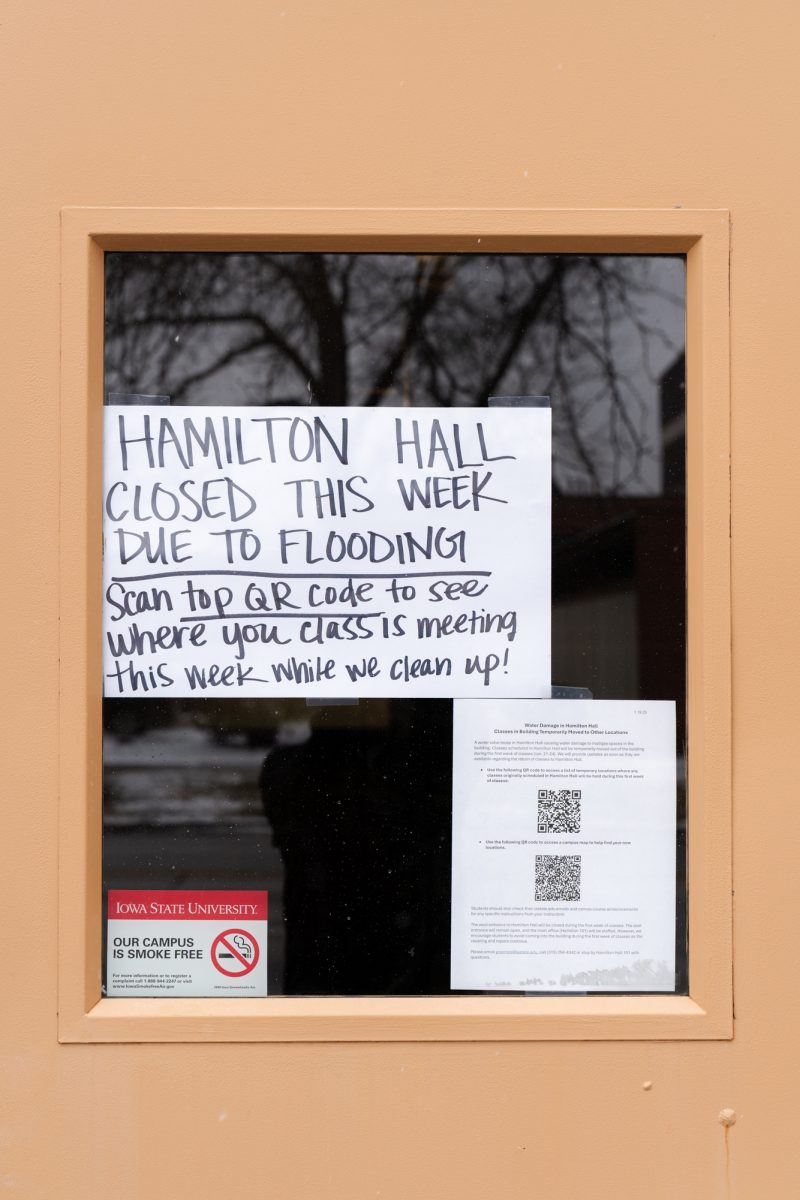Mold in rental housing poses potential health risk
October 4, 2004
Although many students are familiar with mold growing in their refrigerators, other students are complaining about the fungus showing up in other areas of their homes.
Mold has been found in buildings across Ames. Although a common household problem, mold can cause allergic reactions in some individuals.
Legacy Towers, 119 Stanton Ave., is one of the buildings affected. Although many residents said they personally had no problems, a few had mold.
“It was along the pipes, in the living room and above the cabinets in the kitchen,” said resident Brooke Tebrake. “The hallway in my apartment reeked.”
Tebrake, sophomore in communication studies, said she tried to contact the manager of Legacy Towers, Ev Cochrane and Associates, to handle the problem, but was unsuccessful. After contacting Ames officials, she was able to arrange for her landlord to have much of the visible mold sprayed. The apartment will be inspected in a month to see if the mold returns, Tebrake said.
Russ McCullough, co-owner of Ev Cochrane and Associates, could not be reached for comment.
Russ Tell, an environmental specialist at the Story County health department, said that mold is a common problem. Mold is especially a problem for the residents of rental property because these buildings typically receive less maintenance than those in which the owner resides, Tell said. Humidity and water damage are the most common causes of mold.
Stacybotrys is one of the most common molds found in Iowa, Tell said, and is the mold most often reported to the health department.
“Stacybotrys is a common black mold that people have health concerns with,” he said. “It’s an allergen to some people.”
Tell said some individuals have a higher sensitivity to mold, while others face little risk.
“People will have varied symptoms, from cold-like symptoms to respiratory symptoms to pneumonia,” Tell said.
The Story County Health Department does not handle indoor air quality problems, which is how mold is classified.
Mold can often be removed without professional assistance, however. The Iowa State University Extension answer line offers tips on how to clean up mold.
“Protect yourself, wear a mask over your eyes, wash the area with an all purpose cleaner without ammonia, then rinse with a bleach water solution,” said Tabitha Aanonson, extension program assistant at the answer line.
Jennifer Anderson, senior in pre-biological and pre-medical illustration, has also reported mold in the house she rents.
“It started a few weeks ago,” she said. “It’s making me sick.”
Anderson said she found mold growth in her living room, basement, bathroom and bedroom.
She said she contacted her landlord about the problem, although it hasn’t been dealt with yet.
“My roommate’s amplifier stand and guitar case have mold all over them,” Anderson said. “My futon’s pretty much ruined.”
When contacted, Anderson’s landlord, Mark Kassis, said he was unaware of any problem.
“I have no idea what you’re talking about,” he said.
Anderson said that she sent a sample to a sympathetic graduate student she found through a professor, who tested the mold in a lab.
It was identified as Alternaria, a common indoor mold that can cause allergic symptoms in some people.
Mold samples can be sent to the University Hygienic Lab, which has locations in Des Moines and Iowa City, Tell said.







Kerri | May 23, 2023 at 1:38 pm
Every single person who has lived here has some kind of health condition and or dies from indoor mold they cover up the mold with carpet paint and move next victim in and the definition of first degree murder is knowingly and willfully so that means they know what they are doing murder I wish you could see my pictures I think you would 1000% understand and be on elderly disabled and low income families side on this